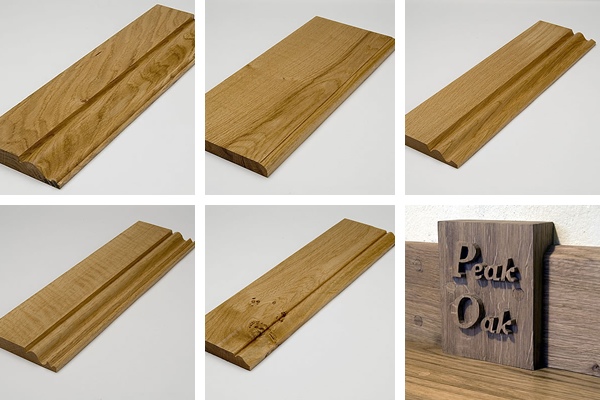What Are The Different Styles Of Oak Skirting?
27th Mar 2015 @ 17:08
The obvious choice when fitting a solid oak floor is to finish it off by fitting oak skirting as well. In the same way there is a number of options available to you when purchasing oak flooring, there are also a number options available with our oak skirting. Like with oak floor grading, the choice of what skirting mould best suits you come down to personal preference.
Probably the most simplistic profile we have available is the Bullnose skirting. If you are looking for solid oak skirting that doesn’t draw attention to itself, the Bullnose fits the bill. Being simple to mitre, the Bullnose can be easily fitted and is less prone to damage from general knocks and cleaning.
Our Belgian skirting offers a typically understated Flemish design. This skirting is for those who require something a little bit different, whilst not being too "in your face".

The Ogee solid oak skirting is perhaps what most will picture when they imagine the traditional skirting board. The Ogee offers more detail than the Bullnose and Belgian, and is often used by customers wishing to match the existing skirting in their homes.
Slightly more ornate than the standard Ogee skirting is the Yorkshire solid oak skirting. This design is taken from a popular traditional design which was common throughout Yorkshire in the 1800s.
For a feeling of the palace at Granada and the Great Mosque of Istanbul, there is the Arabesque skirting profile. With its unique design, this skirting is probably the most intricate of all the moulds we have available.
As standard, all of our solid oak skirting is available in widths of of 5 inch or 7 inch and a thickness of 20mm. These lengths are all produced from the same high quality European oak seen in our oak flooring ranges. With all of our skirting moulds, we also have suitable architrave to match.
If you would like to discuss any of these moulds further with us, please give us a call on 01538 304584.




Add a comment